
Steve Jones celebrates Papua New Guinea’s remarkable Bismarck Sea
Words and photographs by Steve Jones
Papua New Guinea plans to make more than 7,500 square kilometres of the Bismarck Sea a marine conservation zone – more than trebling the amount of ocean it protects. It is easy to see why. This remarkable stretch of sea, even by PNG’s standards, is extraordinary. A recent French survey found the sea to be home to more than 1,300 species of fish, including more than 130 species of shark and ray; a staggering 4,500 species of mollusc, 1,450 species of decapod (crabs, lobsters, shrimps and the like); 320 species of echinoderm and 400 species of hard corals.
This relatively small sea (it totals about 40,000 square kilometres) is open to the Pacific Ocean to the north and separated from the Solomon Sea to the south by the island of New Britain, and to the southeast by New Ireland. To the southwest lies the vast, mountainous barrier of the world’s second-largest island – New Guinea.
The sea is protected from the southeasterly trade winds and, crucially in recent years, from the worst impacts of over-heated seas flowing northwards and bleaching reefs in their wake. Compared to regions such as the Solomon Sea and the northern Great Barrier Reef, the Bismarck Sea has escaped the worst of the coral destruction caused by seas warmed following the climate disruption after the 2016 El Niño.
The Bismarck Sea is also fortunate that it has a relatively low level of population to sustain. Compared with other areas in the Coral Triangle, which stretches from this southeasterly extreme up through Indonesia and the Philippines, it has not been ravaged by overfishing or polluted by agricultural run-off.

Feather stars gain a good feeding spot on a sea fan at Charmaine’s Reef, Kimbe Bay. These crinoids filter plankton and detritus from the water, passing it along to their centrally located mouth using their arms. There are around 600 species so far identified
One of the most serious threats to the delicate environmental balance of the Bismarck Sea has recently receded, with the Canadian deep-sea mining firm Nautilus going bust. The company had wanted to start the world’s first seafloor mining for gold, copper and silver in the Manus Basin right in the heart of the Bismarck Sea, despite vociferous environmental protests. However, after losing its 15 per cent stake in the mining project, the PNG government has turned its attention to preserving this unique resource rather than allowing its exploitation. At the Our Ocean Conference in Bali, it announced the new marine park, which is a big step in reaching its target of protecting 10 per cent of the nation’s territorial waters and coastlines by the year 2025.

An impossibly intact A6-M ‘Zero’, the formidable Japanese World War Two fighter plane. Following its accidental discovery in January 2000 by local fisherman William Nuli, its mysteries soon unfolded. No battle damage, an open canopy and its proximity to the shore indicate a controlled landing as pilot Tomiharu Honda likely sought salvation at a nearby Japanese outpost. His actual fate has been lost in time, but thanks to the painstaking research by Walindi dive resort owners Cecilie and the late Max Benjamin, we at least know part of the story
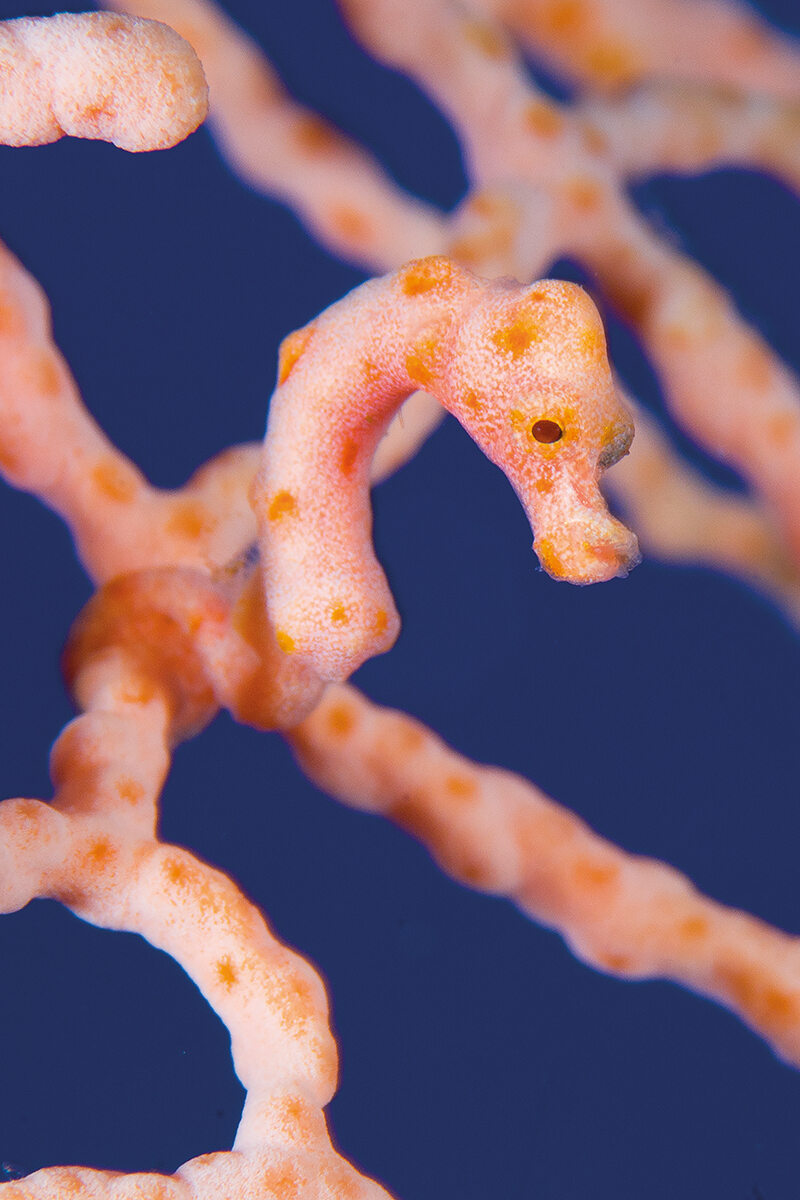
Denise’s pygmy seahorse is among the smallest of all seahorses and only grows to around 2.4 cm. There are currently seven species of pygmy seahorse, with six of these scientifically named in the past 20 years. Hippocampus denise is one of the two species that are only found on gorgonian coral. More species will almost certainly be discovered as research continues

Count the corals, spot the sponges! With at least 400 species of reef-building corals found in Kimbe Bay, its significance as a coral hotspot cannot be overstated. To put that in perspective, there is a total of around 1,000 species of reef-building coral globally, so a massive 40 per cent of those species are found here. With global coral populations under massive pressure due to the climate crisis and pollution, the importance of protecting Kimbe Bay cannot be overstated

Diversity in Kimbe Bay is as profuse above water as it is underwater. Mooring up at Restorf Island, you’ll be greeted by a cacophony of song from the dozens of bird species that nest here, which include osprey and sea eagle
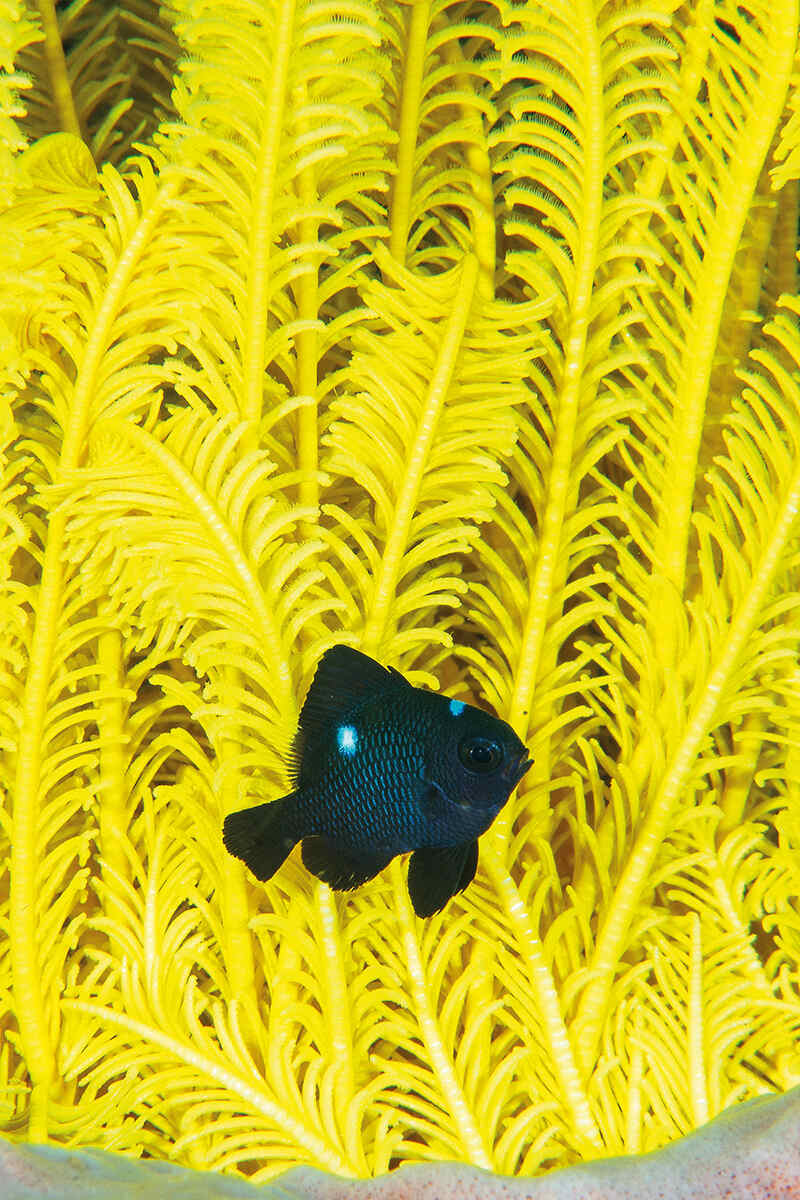
The aptly named threespot damselfish boldly contrasts with the glorious yellow crinoid. Much like some males of the human species, this sweet-looking juvenile will become progressively more bad-tempered as it ages, vociferously defending its territory
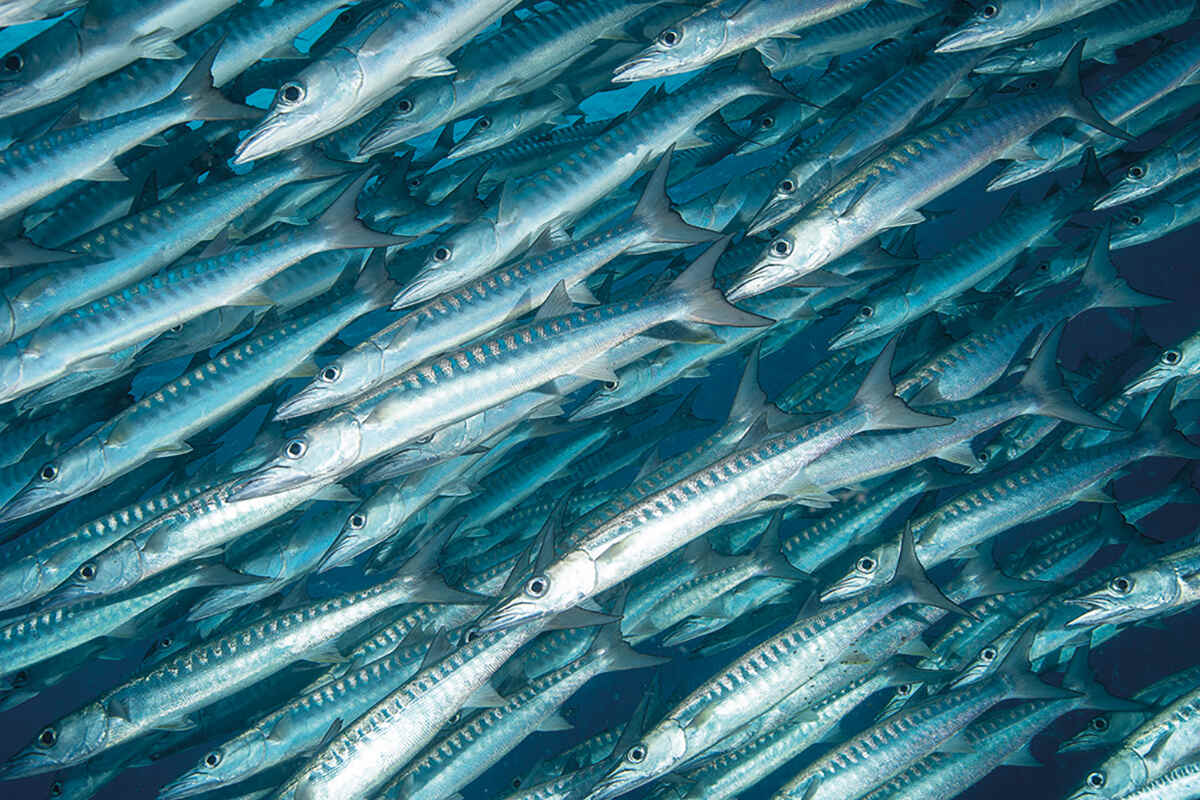
Healthy populations of barracuda are a common sight on the reefs of Kimbe Bay. These blackfin barracuda (Sphyraena qenie) can be seen in huge schools, unlike the solitary great barracuda, also a common sighting here. Harmless to divers despite their unjustly fearsome reputation, if you are calm and approach slowly you might be lucky enough for them to completely encircle you

Impressive reef structures can be found on top of many of the seamounts, such as The Arch in the Fathers Reefs. These undersea pinnacles rising from the deep waters of the Bismarck Sea act as magnets for marine life, both large and small
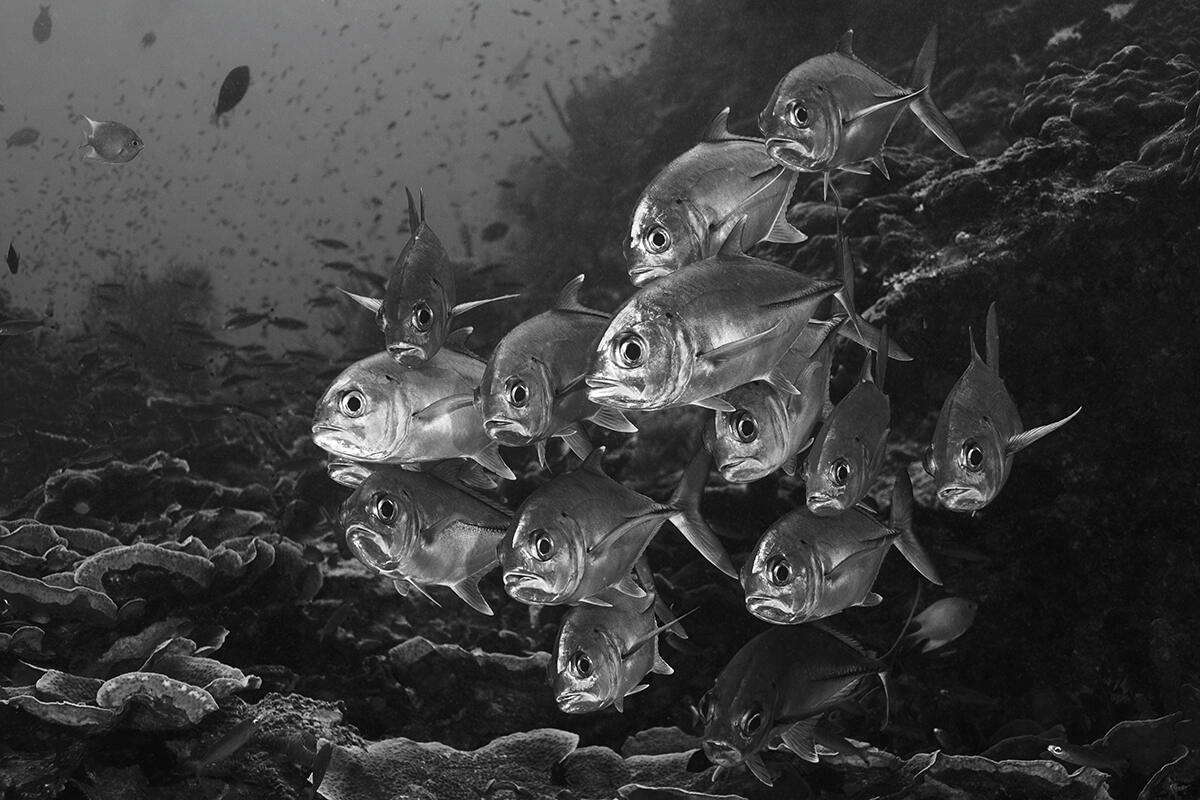
Bigeye trevally, one of the larger jacks found in the region, are often seen hunting as a pack, swimming with purpose over the reef as they look for an opportunity to strike at unwary fish or crustaceans. They are particularly active at dusk

Collecting images of nudibranchs is a favourite pastime for many underwater photographers, and it’s easy to see why, as there are more than 3,000 species and new ones being regularly identified. They range in size from microscopic to giants that exceed 50cm. They can be found in a huge range of environments, from polar to tropical and shallow to abyssal depths. Colouring is equally broad, ranging from the plain to this kaleidoscopic Flabellina exoptata

This slipper lobster perfectly matches the Jurassic feel of much of the isolated reefs north of New Britain. These are relatives of the true lobster and rely on their tank-like armoured exoskeleton and burrowing capability for defence against predators

The thorny crinoid crab, Tiaramedon spinosum grows to only 1.5cm and spends its life living on a crinoid. The biodiversity in the Bismarck Sea is simply off the scale, and the true number of crustaceans living here is unknown. The French study of the Bismarck Sea between 2012-2013 identified 1,450 species of decapod (crabs, lobsters, shrimps and the like) – but this is likely to be only scratching the surface

Closely related to seahorses, there are currently six species recognised in the ghost pipefish genus and the robust ghost pipefish is the largest, growing up to 17cm. Experts in camouflage, they specialise in moving imperceptively while they hunt tiny crustaceans
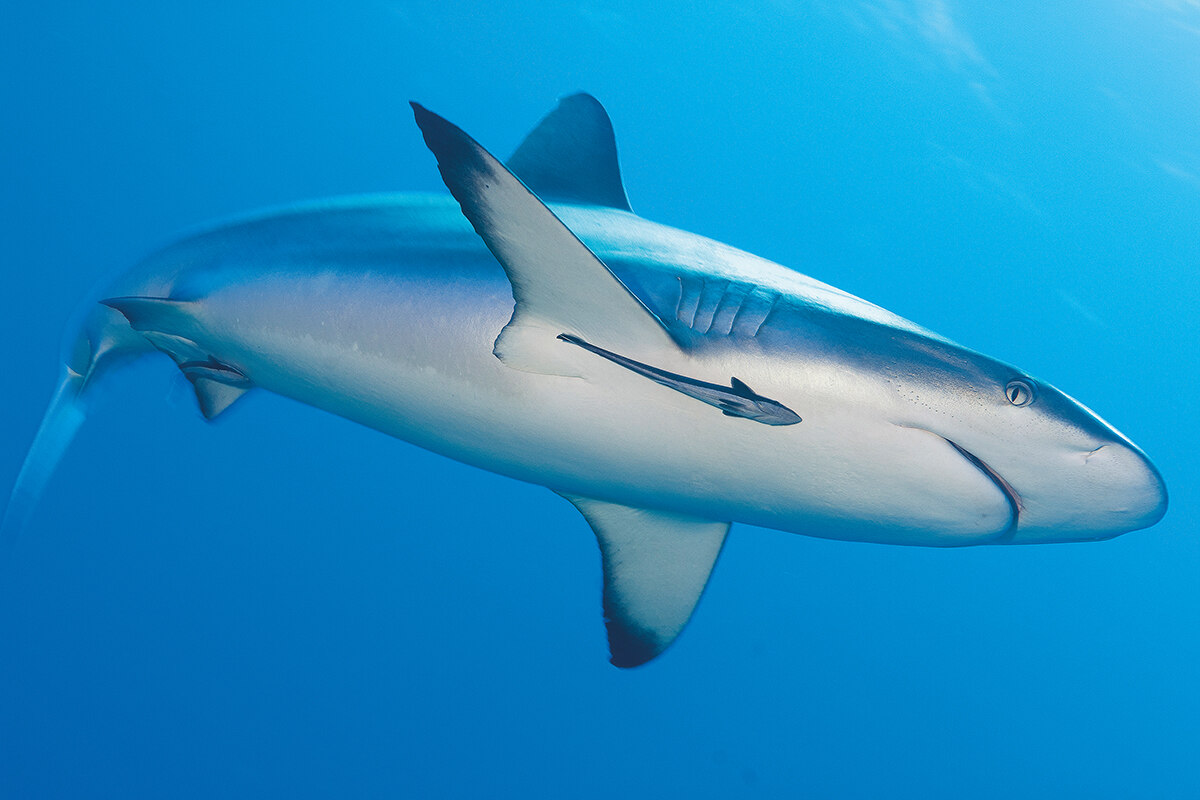
The grey reef shark is an increasingly rare sight worldwide. Papua New Guinea has not escaped the allure of the lucrative shark fin soup trade, and sharks continue to be fished and their fins exported to supply China’s seemingly insatiable, utterly obscene demand that will almost certainly lead to numerous shark species extinctions over the coming decades

This New Zealand Air Force Lockheed Ventura made an emergency landing at Talasea runway on the island of New Britain in September 1944 after being hit during a bombing mission. It ran off the end of the short runway and into the jungle. It hasn’t moved since, and lies surrounded by palm oil trees a 30-minute car drive from Walindi. It is a strange memorial to the brutal fighting which engulfed the area during the Second World War

The fascinating, charismatic mantis shrimps come in two fully weaponised forms: clubbers, who rely on mighty club-like appendages to bludgeon their prey to death; and spearers, whose claws are equipped with sharp barbs designed to impale fish. This golden mantis is of the latter form

The critically endangered hawksbill turtle races across a reef in the Fathers. Of the seven species of marine turtle, six are now threatened and the other does not have enough data to determine its status

This dwarf hawkfish (Cirrhitichthys falco) commonly can be seen on the giant barrel sponges that grow to epic proportions on the reefs of the Bismarck Sea

Along with the grey reef shark, this whitetip reef shark is the most common of the non-pelagic shark species in the area. Growing to around 1.6 metres, this species is an easy catch for shark finners and the reduction in their numbers on any particular reef can lead to a food chain imbalance due to unchecked rises in lower-tier predators. Slow reproduction and a relatively confined habitat severely limit its ability to bounce back from overfishing

Whenever you are near an inhabited area you’ll be greeted by the smiles of local villagers who come out to the boat to trade fresh produce for essentials not readily available to them, such as dried noodles, rice and salt. These intrigued children were at Garove Island in the Witu Islands
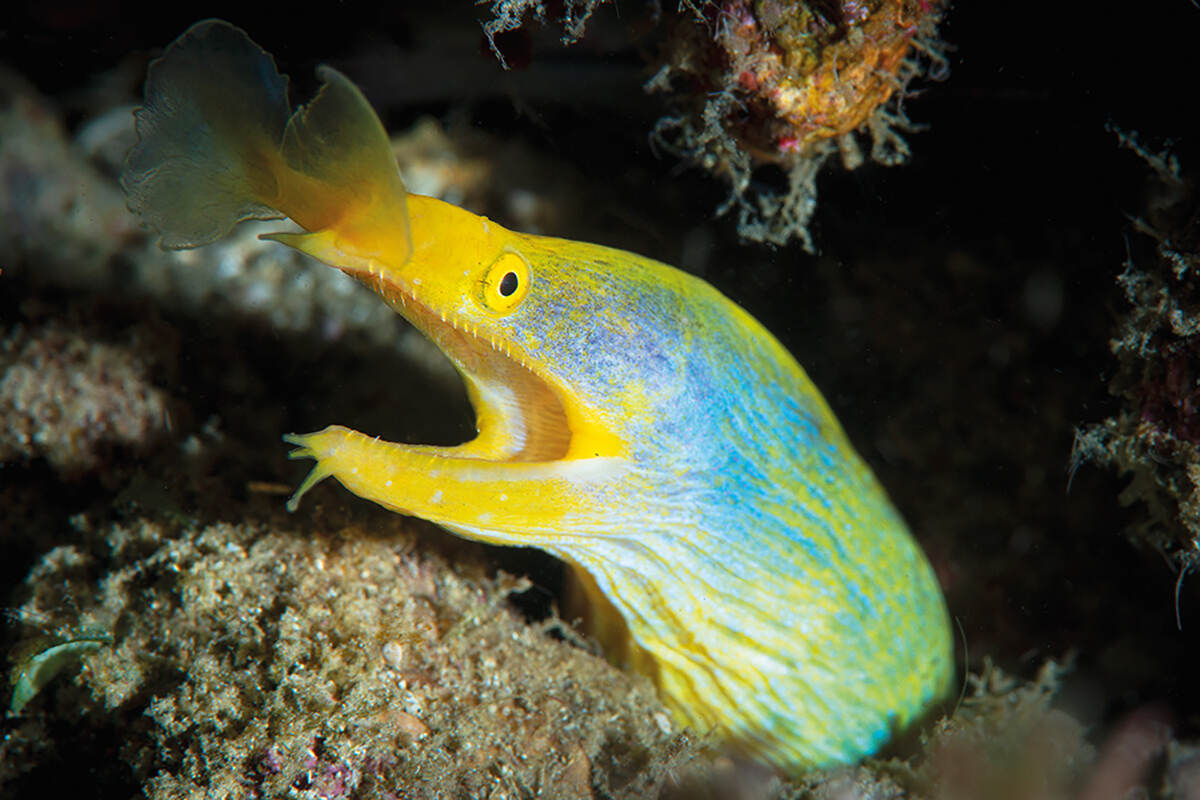
The ribbon eel (Rhinomuraena quaesita) starts life as a male with nearly all black colouring, then becomes bright blue with yellow fins and snout as it grows. When these eels reach about 85cm they actually start to change not only colour again, but also sex, resulting in an all-yellow mature female, which are rare to spot. The fading blue on this male eel indicates it is on the cusp of changing sex
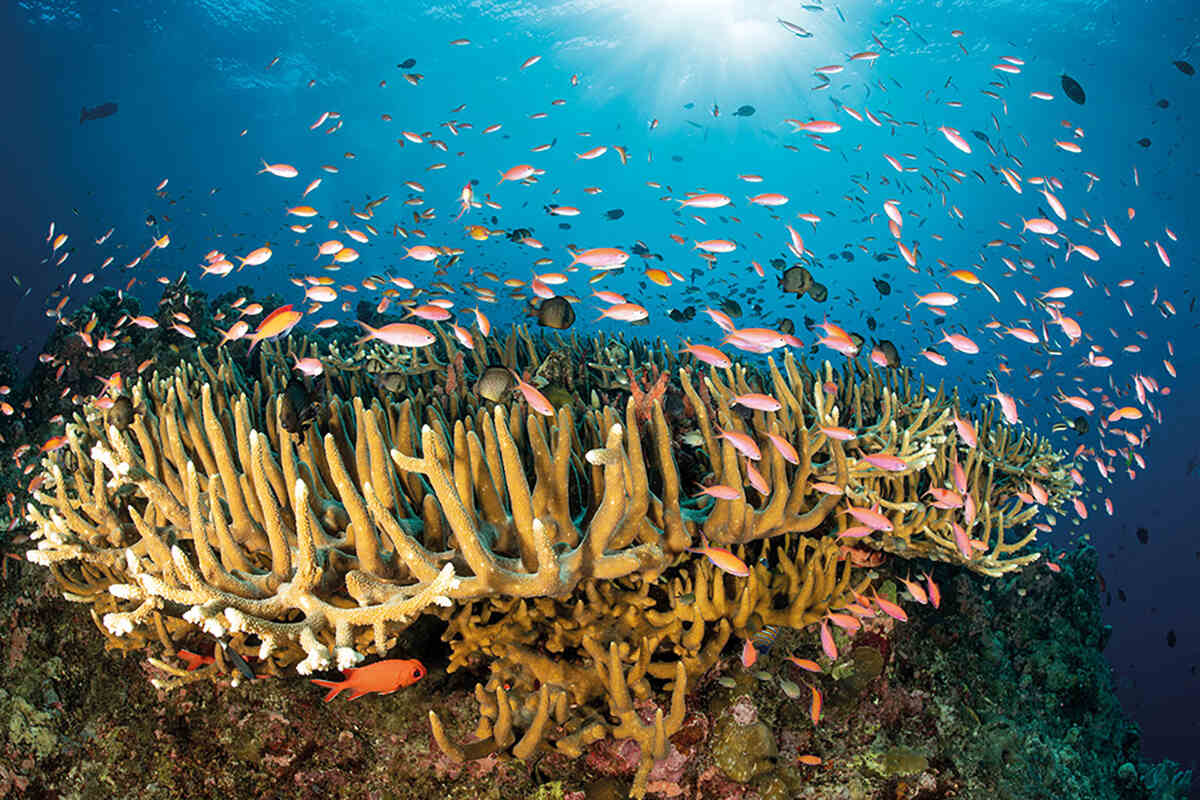
These bright-purple anthias are common on all the reefs in the area. They come out of the shelter of the hard corals to feed on plankton, and hurriedly dive for cover when a threat approaches purple anthias are common on all the reefs in the area. They come out of the shelter of the hard corals to feed on plankton and hurriedly dive for cover when a threat approaches, skilfully avoiding the razor sharp edges of their sanctuary


